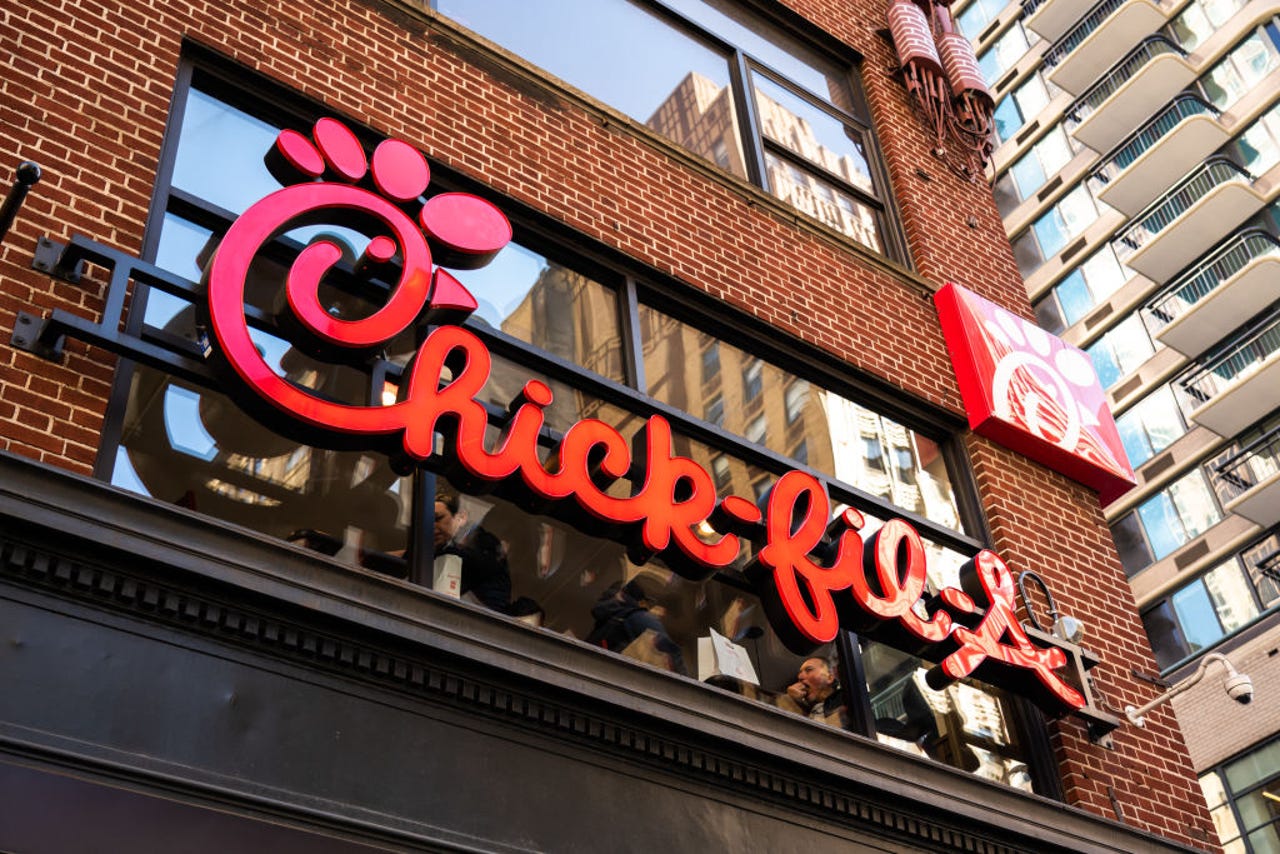
Technology has made eating so much easier.
more Technically Incorrect
Now, you don’t have to prepare by straining your body and going to a store for ingredients. You don’t even have to get in your car — or, perish the notion, walk — to satiate your instant desires at a fast-food joint.
You just pick up your phone (that’s an aerobic move, right?) and demand that food be brought to your door.
This became de rigueur during the pandemic. Delivery and drive-thru drove fast-food brands’ revenue. It made the idea of dining inside a restaurant somehow quaint.
Also: How to cut your grocery bill by shopping online
Meanwhile, the likes of former Uber CEO Travis Kalanick decided there was another way. The so-called ghost kitchen. You cook the food in some cheap, disused warehouse, way out of town, and you speed it toward your ravenous customers by one sort of bike or another.
Yet is this really something for the likes of Chick-fil-A and McDonald’s to be scared of?
Well, it appears that some ghost kitchen creators have begun to consider the very same question.
I was moved to a desire to visit Dallas on hearing the views of Markus Pineyro, CEO and founder — does he really need two titles? — of something called Oomi Digital Kitchen.
No, I don’t find that brand name appetizing either. The mere concept of a digital kitchen fills me with sensations below freezing point.
Pineyro, though, has some fascinating thoughts about the future. He launched his Oomi a few months ago in Dallas. And he claims he’s observed what other ghost kitchens have done and not been overly impressed.
Also: Are ghost kitchens here to stay?
Speaking to QSR magazine, he explained that making food in some cheap old building a few miles from town isn’t optimal for elements such as consistency and, you know, pleasing customers.
Then there’s pleasing employees and drivers. Who wants to go to work somewhere out of town?
“We believe the optimal place to build and locate a ghost kitchen is smack dab in the middle of where our target demographic resides — and in an area that is familiar and easily located by both our on-demand workforce of delivery drivers and our customers,” he said.
This borders on a strange blend of humanity and wisdom.
When your ghost kitchen is in some ghostly part of town, delivery drivers don’t necessarily find it so easy to locate. Then there’s the greater cost of gas and the longer time period to get the food to the customer.
Also: AI images depict grim health future for delivery drivers
Talking of the customer, Pineyro observed: “We’re also focused on providing customers with the shortest delivery times possible to enhance the quality of our product and the entire customer experience, something our V1 ghost kitchen predecessors grossly overlooked.”
How odd that supposedly enterprising tech people would focus on cost savings rather than, say, the customer experience.
Mused Pineyro: “Zero front of the house costs are never really zero, they’re just reallocated into other unforeseen expenses; expeditors, order packers and even greeters who direct delivery drivers all need to be hired to produce and deliver a quality product for delivery.”
Oomi offers such brands as Urban Taco, Hot Lips Asian Grub, and Momo Shack Himalayan Dumplings. No, I’ve never heard of any of them.
I can imagine, though, that if you actually see the ghost kitchen as you go about your daily life, you can more readily accept it as being a real entity.
Also: Artificial intelligence could steal your restaurant job. Here’s how
Moreover, just as you see Chick-fil-A, McDonald’s, and Burger King logos peppering your local landscape, why not entertain the idea that Oomi is in your neighborhood, a real brand that offers you far more variety and equally “instant” delivery?
Buying from some anonymous presence isn’t quite the same as buying from something you might see on a regular basis.
Pineyro, though, isn’t quite alone in his thinking. Kitchen United, for example, has locations in malls and supermarkets.
The biggest fast-food brands are building more repeat purchases through their apps. Perhaps Oomi can build more repeat purchase by offering more choice, while at the same time actually delivering on quality.
And then, perhaps, Oomi could open a gym next door, so that you can actually move your body once in a while.
